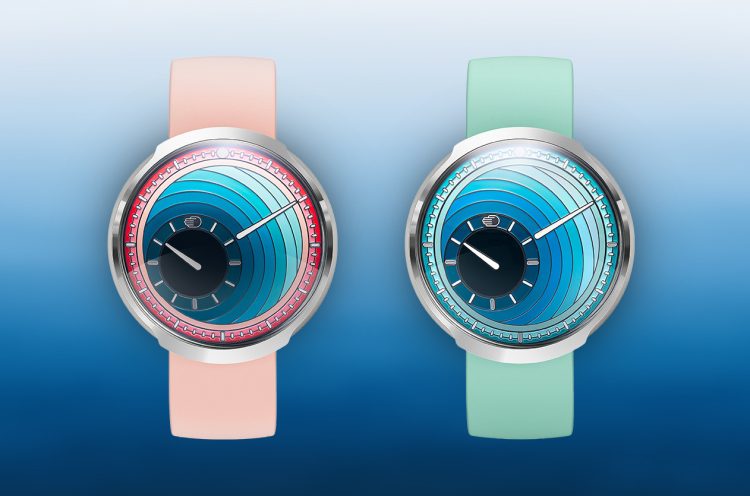In a horological world often enamored by complexity—moonphases, perpetual calendars, skeletonized dials—H. Moser & Cie dares to whisper where others shout. The brand’s hallmark fumé dials often lack even a logo, let alone indices or date windows. From a distance, they appear deceptively simple, almost defiant in their silence. But this aesthetic restraint hides some of the most sophisticated mechanical innovations in modern Swiss watchmaking. Moser’s work poses an uncomfortable question to the industry: can technological leadership be expressed through visual subtraction rather than addition?
When Less Is Actually More
The first impression most observers have of an H. Moser & Cie watch is visual austerity. Models like the Endeavour Centre Seconds Concept or Venturer Vantablack omit not only numerals but branding entirely. In an era dominated by logo-forward design, this choice feels almost rebellious. But this rebellion is not an aesthetic gimmick—it’s an ideological statement.
The brand’s “concept” series has become a philosophical canvas for its deeper message: that true luxury is rooted in mastery, not marketing. It strips the dial down to pure expression, allowing the quality of materials—lacquered fumé fades, Vantablack nanocoating, hand-finished leaf hands—to shine without distraction. The idea is as radical as it is refreshing: if the movement inside is truly excellent, why clutter the face to prove it?
What’s less understood is that Moser’s horological technology doesn’t trail behind its more ornate competitors—it often surpasses them.
The Hidden Genius Inside: Tourbillons and Twin Hairsprings
While many associate advanced complications with large brands like Patek Philippe or Audemars Piguet, Moser has quietly built some of the most innovative in-house calibers in Switzerland. The HMC 804 movement, for instance, powers the Pioneer Tourbillon and integrates the brand’s now-celebrated “double hairspring” system.
This technical marvel solves a classic chronometric problem: positional error caused by gravitational pull on the hairspring. By using two matched, mirror-image hairsprings that breathe symmetrically, Moser effectively cancels out these deviations, improving rate stability without the need for digital correction or silicon escapements.
Then there’s the modular tourbillon, which isn’t just high-performance—it’s built for serviceability. Unlike traditional tourbillons, which require hours of disassembly, Moser’s is plug-and-play. It can be swapped and tested in under 15 minutes, thanks to its compact architecture and escapement module. For collectors who value both performance and practicality, this represents a meaningful innovation.
Perhaps most importantly, these advances are not outsourced. H. Moser & Cie owns and operates Precision Engineering AG, a sister company that produces all its hairsprings, balance wheels, and regulating organs. This is almost unheard of for a boutique brand—and places Moser in the rarefied realm of full vertical integration.
Independent, But Not Inferior
Unlike conglomerate-backed brands, Moser functions as an independent manufacture, operating with less budget but far more creative agility. It’s this freedom that has led to a series of technologically daring—and sometimes provocative—models.
Consider the Swiss Alp Watch, a mechanical timepiece deliberately designed to resemble an Apple Watch. Inside the ironic case sat a hand-finished, manually wound movement beating at 18,000 vph. It was a commentary on digital culture, but also a reminder: mechanical watchmaking could still be innovative, playful, and subversive. And all this came from a brand producing fewer than 2,000 watches a year.

This freedom also fuels rapid experimentation. In 2023, Moser unveiled the Streamliner Chronograph with a flyback automatic movement developed with Agenhor. The movement not only offers lateral clutch engagement but also hides its complexity behind a clean cushion case and radial-brushed fumé dial. There are no flashy subdials, no tachymeters—just legibility and performance, rendered tastefully.
Moser’s approach contrasts dramatically with the status quo. Where others flaunt complications, Moser integrates them. Where others rely on external design studios, Moser draws inspiration from nature, culture, and satire. This makes its technological innovations feel less like statements of power and more like acts of principle.
Conflicting Values: Boutique Scale vs Manufacturing Ambition
Still, there is tension within Moser’s dual identity: how does a company known for minimalist design reconcile it with the expense and effort of pushing mechanical limits? After all, building in-house tourbillons, interchangeable escapements, and twin hairsprings isn’t necessary to appeal to casual luxury buyers.
Yet this contradiction is part of Moser’s allure. The brand doesn’t innovate for scale—it innovates for coherence. It sees beauty not just in visual lines, but in the movement’s behavior, accuracy, serviceability, and philosophy. This is why Moser continues to eschew overproduction. Its 60-person team in Schaffhausen focuses more on finishing by hand than maximizing margin. Each watch feels personal, not just because it’s rare, but because its engineering choices reflect a thought process, not a trend.
This ethos has helped Moser cultivate a cult following—especially among collectors who appreciate the paradox of a brand that says so little but does so much. It’s the horological equivalent of a blank canvas that reveals its depth only under close inspection.
Design Isn’t Decoration—It’s the Function Made Visible
The minimalism of Moser’s watches often hides the mechanical art below, but it doesn’t obscure intent. A polished bezel that fades into a domed sapphire, or hands with beveled flanks and open centers—these are not aesthetic flourishes; they are exercises in restraint, finishing, and harmony.
The success of models like the Endeavour Perpetual Calendar—one of the most legible and streamlined QPs on the market—proves the point. Rather than clutter the dial with multiple windows and counters, Moser opted for a single date window and a stubby hand that quietly indicates the month. The movement, however, features over 200 components and can be adjusted forward and backward without risk.
It is this balance of silent sophistication and engineering excellence that sets Moser apart. It does not overwhelm. It earns appreciation through engagement.
Can Minimalism Win the Future of Haute Horlogerie?
In a watch industry increasingly split between high-tech and high-hype, Moser offers a third path—one rooted in intellectual elegance. Whether it’s their Vantablack dials that absorb light or their streamliner bracelets that hug the wrist like sculpture, the message remains the same: excellence doesn’t need to shout. It only needs to endure.
As the lines blur between fashion and function, digital and analog, it’s becoming clear that collectors crave more than just precision—they want personality. Moser delivers both, wrapped in an aesthetic that says less, but means more.
For those seeking watches that combine mechanical mastery with emotional resonance, H. Moser & Cie doesn’t just compete technologically—it redefines what that competition looks like.





































